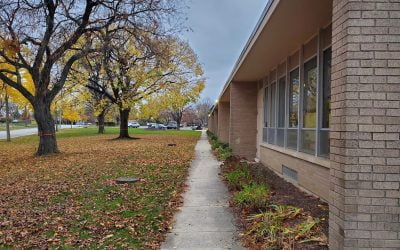Real E-Rate Overview
What is the E-Rate Program?
The E-Rate Program is a U.S. Federal Program designed to provide discounted telecommunications and internet access services to eligible schools and libraries. The E-Rate Program subsidizes eligible educational institutions’ costs for internet access, internal connections, and basic telecommunications services, making it more affordable for them to acquire and maintain essential connectivity. This program plays a crucial role in helping schools and libraries, especially those in underserved or economically disadvantaged areas, access digital resources and educational opportunities.
What is E-Rate Funding?
E-Rate Funding is the financial support provided to eligible schools and libraries in the United States through the E-Rate program. E-Rate funding is provided as discounts on eligible services and equipment. The goal of E-Rate funding is to ensure that students and those in libraries in the U.S. have the same access to resources and opportunities.
Below is the application process provided by Universal Service Administrative Co.
E-Rate Application Process:
Step 1
Competitive Bidding
Competitive bidding is a formal process to identify and request products and/or services the applicants need.
This entity certifies an FCC Form 470
Step 2
Selecting Service Providers
After you close your competitive bidding process, you will evaluate the bids received and choose the bid that is the most cost-effective.
Step 3
Apply for Discounts
To apply for E-Rate program discounts, file an FCC Form 471 to provide USAC with information about the services or equipment you are requesting and the entities that will receive the service or equipment.
Step 4
Application Review
After you file and certify an FCC Form 471 within the filing window, Program Integrity Assurance (PIA) reviewers at USAC check the information on your form for completeness and accuracy and may have additional questions for you to answer.
Step 5
Start Services
After you have recieved your Funding Commutment Decision letter (FCDL) and the delivery of your service has started, you must file an FCC Form 486.
Step 6
Invoice USAC
After USAC has processed your FCC Form 486, you or your service provider can begin the process of invoicing the discount share of the approved eligible services.
E-Rate Eligibility
E-Rate eligibility is determined by the school or library’s level of need. Everyone must go through the application process and get approved, no one automatically qualifies for any level of funding. To be a participant of E-Rate you must follow the program’s guidelines and requirements. E-Rate eligibility also depends on location and participation in other federal assistance programs.

Schools
Public and most private K-12 schools are eligible. This includes elementary schools, middle schools, and high schools.
- Eligible services that are a part of E-Rate include telecommunications, internet access, internal connections (WiFi), and maintenance of all these services.
- Schools that have a higher percentage of students who have reduced-priced lunches receive discounts.

Libraries
Public libraries, as well as many types of private libraries, are eligible. This includes public libraries, public school libraries, and regular academic libraries.
- Eligible services include internet access and internal connections, libraries can use E-Rate funding to provide internet access to underserved communities.
Below is the application process provided by Universal Service Administrative Co.
What is the Service Provider Process?
Step 1
Obtain a Spin
A Service Provider Identification Number (SPIN) is a unique nin-digit number assigned to service providers by USAC when an FCC Form 498 is filed. This number is also known as the service provider’s 498 ID.
Step 2
Responding to Bids
To open a competitive bidding process, applicants post one or more FCC Forms 470 to the USAC website. Service provider can review and respond to bids based on the information contained in the FCC Form 470.
Step 3
Winning the Bid
After an applicant has chosen your bid as the most cost-effective service offering for one or more of the services requested on an FCC Form 470 and/or request for proposal, you can assist the applicant with the remainder of the application process.
Step 4
Starting Services
In general, discounted services for a particular funding year cannot begin before July 1 of that year. Services that continue from one year to the next under a multi-year contract are considered to start again in the new funding year because they recieve a new Funding Request Number for that year.
Step 5
Invoicing
USAC can proccess invoices from either the applicant or the service provider after the following have occurred:
- USAC has issued a FCDL with a positive funding commitment
- The applicant has submitted, and USAC has successfylly process, an FCC Form 486
- & more!
St. Emily’s Security System Make Over
I'm delighted with their exceptional work quality, and I feel my school is very safe due to their services.In today's world, ensuring the safety of our children has been more critical than ever. Elementary schools, play a role in nurturing and educating the future...
Veeam in Education
Veeam is a leading provider of backup, recovery, and data management solutions for educational institutes and other organizations. Veeam offers several products and services that benefit educational institutes in managing their data and ensuring business continuity. ...
Dormakaba in Education
We partnered with Dormakaba because we stand with their powerful technology that protect our schools. Dormakaba has experience in producing access control solutions for grades K-12. Dormakaba's mode technology consists of: Commercial motise locks & interchangeable...



